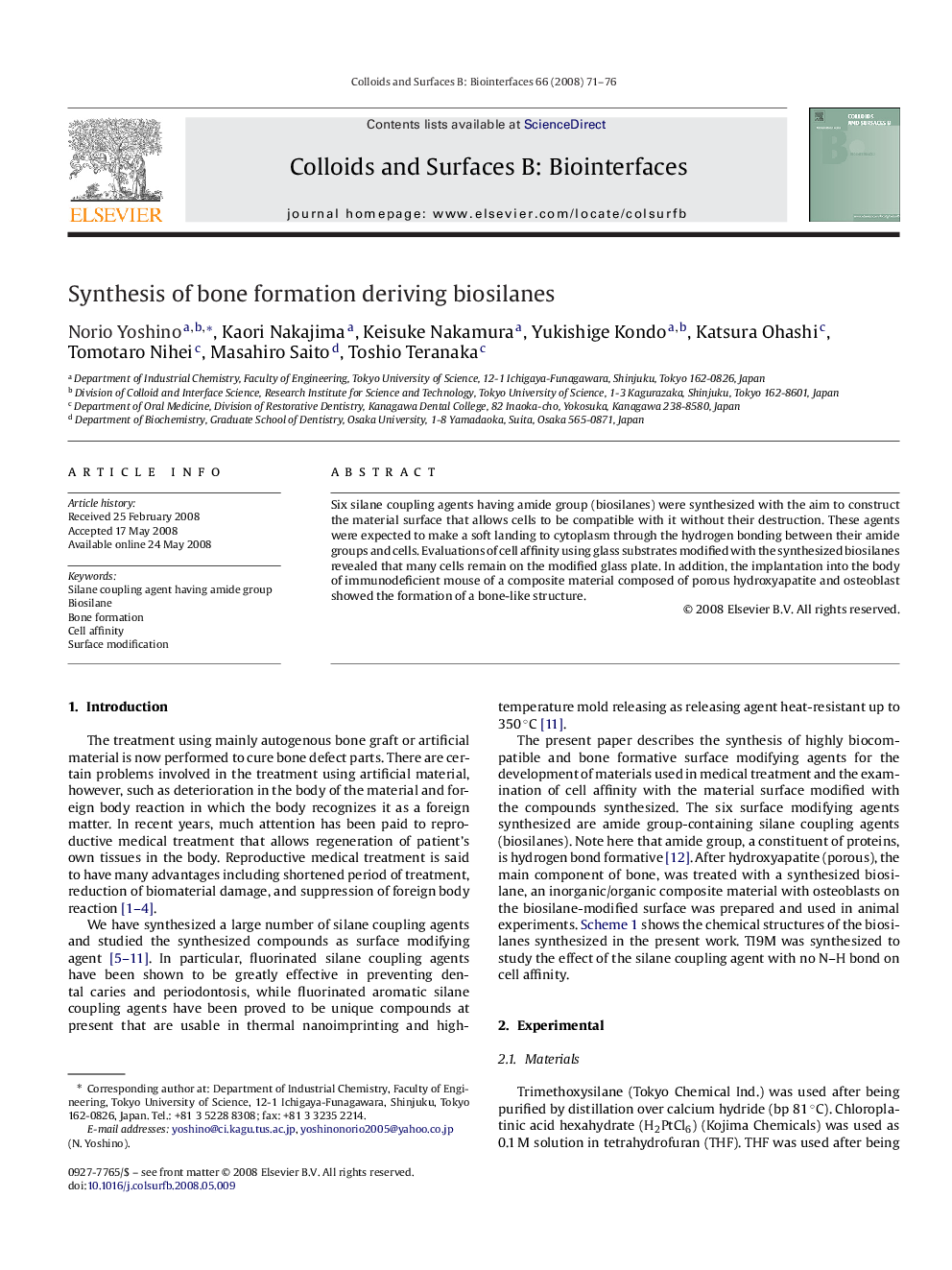| Article ID | Journal | Published Year | Pages | File Type |
|---|---|---|---|---|
| 602162 | Colloids and Surfaces B: Biointerfaces | 2008 | 6 Pages |
Abstract
Six silane coupling agents having amide group (biosilanes) were synthesized with the aim to construct the material surface that allows cells to be compatible with it without their destruction. These agents were expected to make a soft landing to cytoplasm through the hydrogen bonding between their amide groups and cells. Evaluations of cell affinity using glass substrates modified with the synthesized biosilanes revealed that many cells remain on the modified glass plate. In addition, the implantation into the body of immunodeficient mouse of a composite material composed of porous hydroxyapatite and osteoblast showed the formation of a bone-like structure.
Graphical abstractFigure optionsDownload full-size imageDownload as PowerPoint slide
Related Topics
Physical Sciences and Engineering
Chemical Engineering
Colloid and Surface Chemistry
Authors
Norio Yoshino, Kaori Nakajima, Keisuke Nakamura, Yukishige Kondo, Katsura Ohashi, Tomotaro Nihei, Masahiro Saito, Toshio Teranaka,
